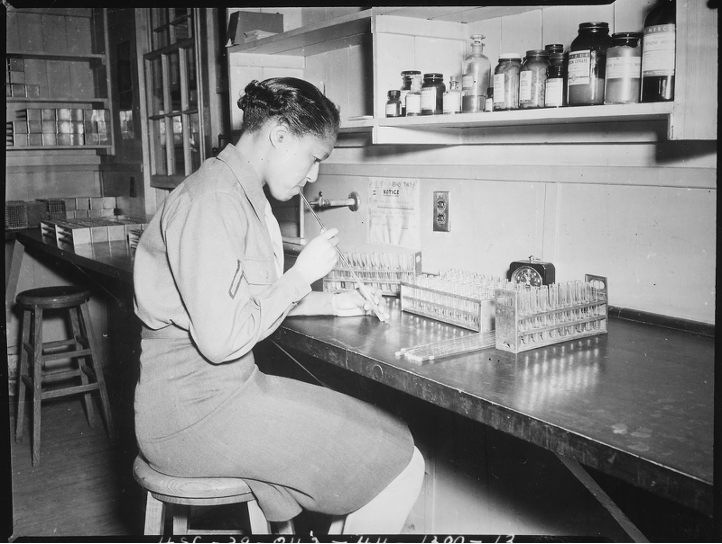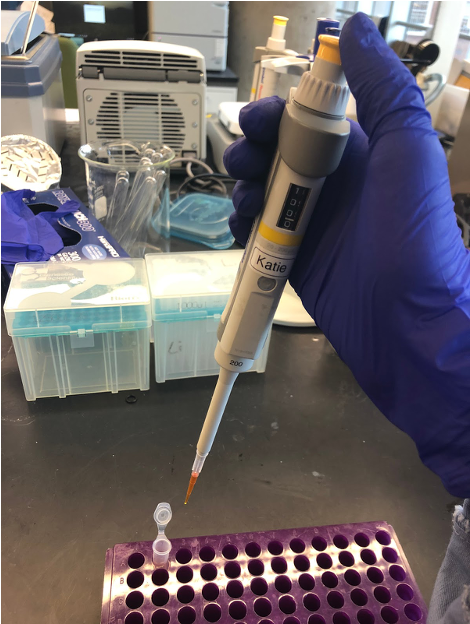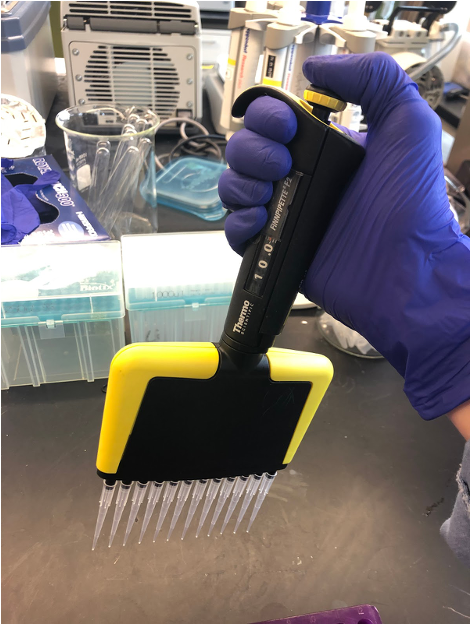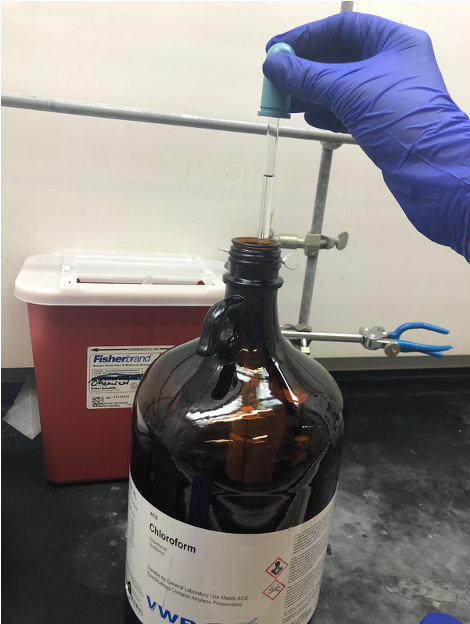By Katie Acken Lowe
(Noun or verb. /pie-PET/)
What does it mean?
A pipette is a mechanical instrument used to measure a precise volume of liquid.
Once measured, the liquid is then transferred into a tube, beaker or other vessel.
There are many different types of pipettes used for specific purposes, such as single channel pipettes, multi-channel pipettes, serological pipettes, and Pasteur pipettes (see images below).

What are the different types of pipettes?
As stated above, pipettes come in different shapes and sizes, and each type serves a specific purpose.
How do I use it in a sentence?
I use my pipette every day to transfer liquids. (noun)
Pipette 4 uL of chemical X and add it to the mixture. (verb)
Related terms
‘Pipette’ can also be spelled ‘pipet’. These spellings are used interchangeably and have the same pronunciation, although everyone sounds a little different when they say it.
Fields of study in which this word is commonly used
Almost every field of life science uses pipettes in the lab! Chemistry, biology, biochemistry, neuroscience, genetics, immunology, etc.


These pipettes are useful for transferring equal volumes of liquid into multiple tubes or vessels.


